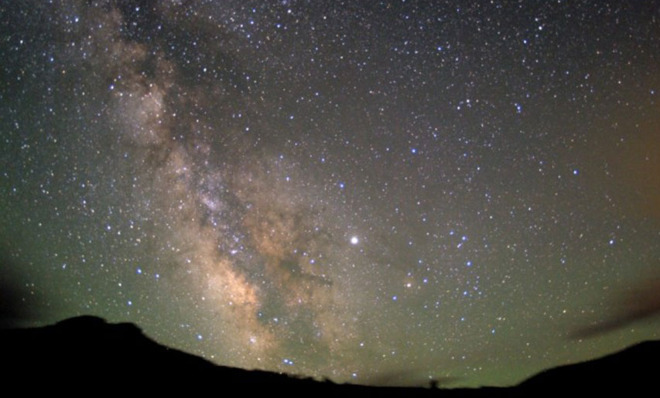How the U.N. plans to defend Earth from asteroids
It's called the Committee on the Peaceful Uses of Outer Space, and it means business


It's a scenario familiar to any science fiction fan: An asteroid is hurtling toward Earth, and humans must deflect or destroy it to save themselves and every other living creature on the planet.
But unlike most sci-fi plots, this one is a real threat, right now. And the United Nations is on it.
Last week, the U.N. General Assembly approved the creation of an International Asteroid Warning Group. Former NASA astronaut Ed Lu and other members of the Association of Space Explorers have been calling for the formation of a global asteroid-fighting group for years, but the meteor that exploded above Chelyabinsk, Russia, in February got people taking the ASE's recommendations seriously.
The Week
Escape your echo chamber. Get the facts behind the news, plus analysis from multiple perspectives.

Sign up for The Week's Free Newsletters
From our morning news briefing to a weekly Good News Newsletter, get the best of The Week delivered directly to your inbox.
From our morning news briefing to a weekly Good News Newsletter, get the best of The Week delivered directly to your inbox.
The new U.N. plan to save Earth from killer astroids has three basic components, drawn heavily from the Association of Space Explorers and Lu's asteroid-battling nonprofit, the B612 Foundation.
Part 1: Get prepared
This may seem like a letdown: Isn't forming an International Asteroid Warning Group preparation enough for the big space rock? The problem is that the U.N. relies largely on member states, and the world's space superpowers are woefully behind the curve, says ASE member Rusty Schweickar, who flew on Apollo 9 in 1969.
"No government in the world today has explicitly assigned the responsibility for planetary protection to any of its agencies," Schweickar said at an Oct. 25 discussion at the American Museum of Natural History. "NASA does not have an explicit responsibility to deflect an asteroid, nor does any other space agency." Among other things, lots of research is needed on the best way to derail an asteroid.
A free daily email with the biggest news stories of the day – and the best features from TheWeek.com
Countries also have to come up with contingency plans in case the U.N.'s new group doesn't detect a huge asteroid in time. That could mean spotting the projectile years before projected impact. "If we don't find it until a year out, make yourself a nice cocktail and go out and watch," Schweickar deadpanned.
Here are Lu, Schweickar, and their ASE colleagues at the American Museum of Natural History, in a discussion on the asteroid threat hosted by Neil deGrasse Tyson (it's almost an hour long):

Part 2: Find the asteroids before they find us
The Chelyabinsk meteorite was a wake-up call because nobody saw it coming. "The world's space agencies found out along with the rest of us, on Twitter and YouTube," says Clara Moskowitz at Scientific American. This will be the main mission of the new International Asteroid Warning Group: To act as a clearinghouse of information from nations or groups that have found potentially deadly asteroids or other space rocks.
The IAWG will also have its own asteroid-detecting infrared telescope, the Sentinel Space Telescope, developed with private financing by the B612 Foundation. Once the Sentinel is launched, hopefully in 2017, the U.N. will have its own eye in the sky. "There are 100 times more asteroids out there than we have found," Lu warns. "There are about one million asteroids large enough to destroy New York City or larger."
If Step One is the Boy Scout motto ("Be prepared"), Step Two is the catchphrase from the old GI Joe cartoon: Knowing is half the battle. "Early warning is important because it increases the chance of being able to deflect a threatening asteroid once it is found," explains Scientific American's Moskowitz. "If a spacecraft struck an asteroid five or 10 years before the rock was due to hit Earth, a slight orbital alternation should be enough to make it pass Earth by."
Part 3: If necessary, blast that sucker out of our path
This is where the U.N. really gets in on the action. If the International Asteroid Warning Group discovers a deadly projectile speeding Earthward, the U.N. Committee on the Peaceful Uses of Outer Space — yes, that's a real agency, formed in 1959 and tucked into the U.N. Office of Outer Space Affairs — springs into action.
Or at least bureaucratic action: The committee will help coordinate an international mission to deflect the asteroid by slamming a space ship into it.
That's probably the easiest method of defense: "Smashing spacecraft into threatening asteroids, causing them to veer off course," says Nicholas Tufnell at Wired. But it isn't the only one for the group to consider. There's also "a nuclear explosive device, kinetic impact, a gravity tractor, or even wrapping the asteroid in a sheet of reflective plastic such as aluminized clingfilm, which will act as a solar sail," Tufnell adds.
The Week's Chris Gayomali, looking at the same question, ruled out nukes as impractical and not up to the task. Ramming a rocket into the object to change its trajectory is probably our safest bet. "And just in case that same pesky asteroid circles back around the sun, we send a second probe hitchhiking behind the impactor for extra insurance."
This probe wouldn't crash into it again. Rather, it would move to a "station-keeping position" near the space rock, "using its own gravity to very gently tug the rock into a safe orbit." No messy nuclear explosion necessary. [The Week]
If that still sounds like a long shot, you can take some comfort that there is now an internationally sanctioned group of scientists charged with coming up with the best way to protect the Earth from hostile rocks. It's too bad it takes an existential threat to bring us together. Kumbaya.
Peter has worked as a news and culture writer and editor at The Week since the site's launch in 2008. He covers politics, world affairs, religion and cultural currents. His journalism career began as a copy editor at a financial newswire and has included editorial positions at The New York Times Magazine, Facts on File, and Oregon State University.
-
 Antibiotic resistance: the hidden danger on Ukraine’s frontlines
Antibiotic resistance: the hidden danger on Ukraine’s frontlinesUnder The Radar Threat is spreading beyond war zones to the ‘doorstep’ of western Europe
-
 ‘Capitalism: A Global History’ by Sven Beckert and ‘American Canto’ by Olivia Nuzzi
‘Capitalism: A Global History’ by Sven Beckert and ‘American Canto’ by Olivia NuzziFeature A consummate history of capitalism and a memoir from the journalist who fell in love with RFK Jr.
-
 Who will the new limits on student loans affect?
Who will the new limits on student loans affect?The Explainer The Trump administration is imposing new limits for federal student loans starting on July 1, 2026
